Far Side of the World:
The Ships, Part Two
by Mike Bennighof, Ph.D.
April 2025
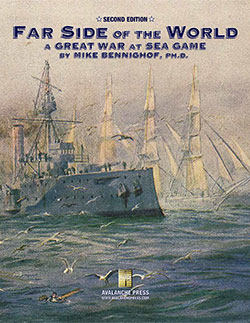 Great War at Sea: Far Side of the World takes the premise (and the map) from our old Cruiser Warfare game, and builds a new game around it. That includes a completely new set of pieces, which as of this writing have just arrived in our hands. And they are beautiful. Great War at Sea: Far Side of the World takes the premise (and the map) from our old Cruiser Warfare game, and builds a new game around it. That includes a completely new set of pieces, which as of this writing have just arrived in our hands. And they are beautiful.
This is why we refuse to move their production to the United States; no American producer can meet these standards. The rich color reproduction, the sharp images, the silky texture and above all the precise die-cutting with minimal pressure (so the back of the piece doesn’t look like it was hammered by John Henry). And most importantly for us, the cutting pattern is easily re-arranged, which allows the game design to have exactly the pieces it needs and not be dictated by the die pattern.
So what do we have in our wonderful set of pieces? Let’s resume our preview.
The French

France’s Marine Nationale kept its aged battleships at home, on the outside chance that they might meet the combined Italian and Austro-Hungarian fleets in the Mediterranean. But they did deploy their older armored cruisers around the globe in the hunt for Spee and his squadron, as part of their own defense of trade and empire, and had a number of rattletrap cruisers and gunboats patrolling their colonial backwaters.
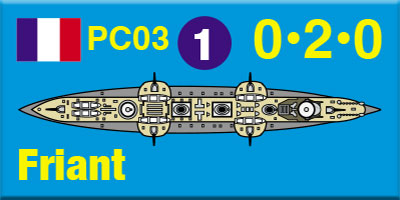
We’ve upgraded four of those old cruisers to “long” pieces; that doesn’t make them any better fighting ships, but does allow us to show off their bizarre designs in top-down format, which makes the game that much more fun.
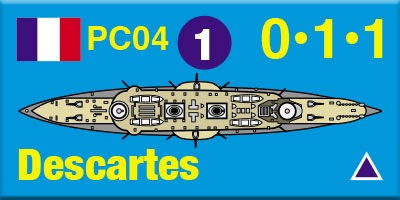
The French do have seven relatively modern armored cruisers, ships of three similar classes designed for commerce raiding before great power politics moved Britain from “potential enemy” to “definite friend.” Unfortunately for the Marine Nationale, they were built to attack merchant shipping, not defend it, and they are no match for the bigger and more powerful German armored cruisers.
The Russians
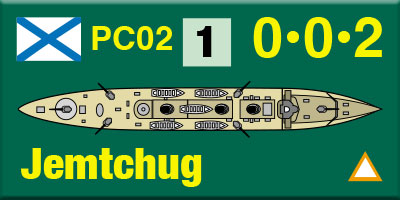
There are just two Russian ships participating in Far Side of the World: the large protected cruiser Askold, which patrolled in the Pacific during Spee’s escape, and the small protected cruiser Jemtchug, shot to pieces by the German light cruiser Emden at Penang. Jemtchug has been promoted to a full-sized playing piece, which seems fitting since she gets to fight Emden in one of the battle scenarios (and might do better this time, with a more attractive piece).
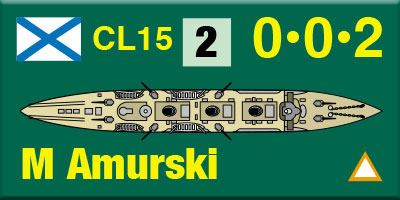
The Russian Admiralty understood these two ships to have outlived their service lives, and ordered two brand-new light cruisers to replace them. Unfortunately, they ordered them from a German shipyard, and they served the High Seas Fleet very well. The two new cruisers appear in Far Side of the World as optional reinforcements.
The Dutch

The old Cruiser Warfare included a substantial contingent from the Royal Netherlands Navy, both the ships actually deployed in the Dutch East Indies (a collection of rather poorly-designed coast defense ships) and those they wished to send there (four modern dreadnoughts). They’re all back in Far Side of the World, with new artwork. They may get to see action; the Central Powers player to can provoke an armed response to violations of Dutch neutrality. And you’ll use them a lot in the scenario/analysis book East Indies Campaigns.
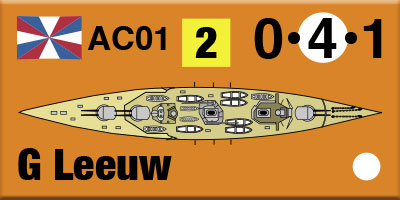
Since we included planned Dutch dreadnoughts in the old Cruiser Warfare, I didn’t want to take them out, but the result was a quite unbalanced fleet, with modern dreadnoughts and little support, most of that very old and nearly useless. For Far Side of the World we’ve added some other Dutch ships, actually planned but not built: fast armored cruisers, more potent coast-defense ships, light cruisers, and big destroyers.
The Austrians
There are two Austro-Hungarian ships in the mix; Kaiserin Elisabeth has already received her own piece in Daily Content. She was the Imperial & Royal Navy’s station ship in China and helped defend the German colony of Tsingtao during the Japanese siege.

Her near-sister Kaiser Franz Josef I had alternated that duty with her and would have been the choice to reinforce the Austrian presence in the Far East. Neither is a very good fighting ship, so her absence would have subtracted little from the fleet’s strength at home.
The Italian
Italy’s first armored cruiser, Marco Polo had not been a very good fighting ship even when commissioned in 1894. That made her the prime candidate to show the flag far away from the homeland. She did participate in the 1911-1912 Italo-Turkish War, and made four deployments to the Far East.

The outbreak of war found her at Kobe, Japan, but Italy’s immediate declaration of neutrality spared her from internment or worse. Had Italy remained with her Central Powers allies, Marco Polo would not likely have lasted long. She’s an option in Far Side of the World; in reality she made a slow voyage home to serve as a barracks ship and troop transport before scrapping right after the war.
The Kiwi
HMS New Zealand was an Indefatigable-class battle cruiser just like Australia, but unlike her sister ship, she was a Royal Navy vessel and not part of the New Zealand Naval Forces (these would not become the Royal New Zealand Navy until 1941). New Zealand (the Dominion) paid for New Zealand (the ship), raising a loan for the cost that would finally be paid off in 1945. We included her in New Zealand colors because we could (you can find her in ROyal Navy livery in other games, if you’re the pedantic sort).
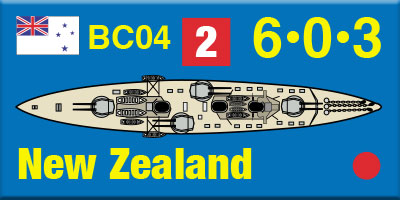
She visited her namesake land in 1913, and perhaps half of the country’s one million residents streamed to the ports she visited to come aboard or at least view her from dockside or the flocks of boats that surrounded the ship. Maori chiefs blessed the ship and provided the symbols of war; perhaps because of this, New Zealand suffered no crewman killed in action during the war (though the ship’s mascot, a bulldog, was murdered). Unlike Australia, only about 10 to 15 percent of the crew at any one time were Kiwis, though the Royal Navy tried to assign as many New Zealanders as they could find to the ship.
When the German cruiser squadron was loose in the Pacific, calls grew in New Zealand’s Parliament for “their” battle cruiser to be sent home to defend local waters, just like Australia had been stationed in the Pacific. That never happened, but it’s an option in Far Side of the World.
Order Far Side of the World right here.
Please allow an extra three weeks for delivery.
Sign up for our newsletter right here. Your info will never be sold or transferred; we'll just use it to update you on new games and new offers.
Mike Bennighof is president of Avalanche Press and holds a doctorate in history from Emory University. A Fulbright Scholar and NASA Journalist in Space finalist, he has published a great many books, games and articles on historical subjects; people are saying that some of them are actually good.
He lives in Birmingham, Alabama with his wife and three children. He misses his lizard-hunting Iron Dog, Leopold.
Daily Content includes no AI-generated content or third-party ads. We work hard to keep it that way, and that’s a lot of work. You can help us keep things that way with your gift through this link right here.
|
